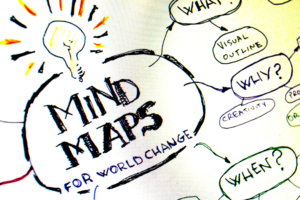Remember the time when most of us started working from home due to the pandemic? Software development teams were no exception. In a remote work setting, effective communication and collaboration became even more crucial. Let me share a story to set the stage. A friend of mine, part of a development team, found their project struggling as they transitioned to remote work. The team soon realized that proper project planning was the key to overcoming challenges in communication and collaboration. In this blog post, we’ll delve into the crucial topics of communication and collaboration in development teams. We’ll also explore how effective project planning can vastly improve both, particularly in a remote work setting.
Benefits of Communication:
Firstly, let’s discuss communication. Imagine a scenario where two developers are working on the same feature, but they’re not talking to each other. They’re bound to duplicate efforts, right? That’s where effective communication comes in. By keeping everyone in the loop, the team can avoid confusion and reduce time wasted on redundant tasks.
Moreover, when information is shared openly, it’s easier to identify and solve problems. For example, a developer might be stuck on a tricky bug. With good communication, the team can rally around to help, resulting in a quicker resolution. In short, talking it out can save time and stress.
Communication’s benefits in project planning?
- Clarifying project goals and objectives: With Clear project goals, through communication, prevent confusion and promote cohesive team outcomes.
- Sharing information: Effective communication facilitates the timely sharing of important information, reduces misunderstandings and delays, and improves decision-making.
- Establishing roles and responsibilities: Establishing clear roles and responsibilities for each team member through communication reduces confusion and ensures understanding of expected duties.
- Managing conflicts: Identifying and managing conflicts through communication can prevent delays and keep the project on track by quickly and effectively resolving disagreements.
- Improving collaboration: By improving collaboration among team members, communication can enhance the quality of the project and ultimately lead to better project outcomes.
- Monitoring progress: With communication, project managers can track progress and identify potential issues early, taking quick corrective action to prevent escalation.
- Managing stakeholder expectations: Keeping stakeholders informed through communication manages expectations, avoids misunderstandings, and ensures satisfaction with the project outcome.
Importance of Collaboration:
Now, let’s delve into collaboration. In a well-oiled development team, members work together to achieve a common goal. Collaboration enables the sharing of ideas, which can lead to more creative and efficient solutions. For instance, a developer may have a unique perspective on a problem that others haven’t considered, and their input can be invaluable.
Collaboration also means sharing the workload. If one team member is swamped with tasks, others can step in to lend a hand. This not only ensures that the project stays on track, but it also helps build a supportive and trusting team environment.
How can collaboration effectively solve problems?
- Improving productivity: Effective collaboration increases team efficiency and productivity, achieving more in less time.
- Enhancing creativity: Collaboration fosters creativity by uniting diverse skills, perspectives, and backgrounds for innovative ideas.
- Reducing errors: Collaborating on a project can help to identify potential errors and mistakes early on, which can prevent costly and time-consuming problems down the road.
- Streamlining processes: Collaboration streamlines processes, enhancing efficiency, reducing waste, and improving outcomes.
- Encouraging innovation: Collaborating can encourage innovation by promoting experimentation, risk-taking, and outside-the-box thinking.
- Resolving conflicts: Collaborating can help to resolve conflicts by bringing all parties to the table to work towards a mutually beneficial solution.
- Building trust: Collaboration builds trust via open communication and respect, sharing ideas and knowledge.
Tools for effective collaboration & communication:
- Slack: This popular messaging app helps teams stay connected and organized with channels for different topics.
- Trello: This project management tool is great for visualizing tasks and tracking progress.
- Google Drive: For sharing documents and collaborating on them in real time, Google Drive is a solid choice.
- GitHub: Developers can use this platform to collaborate on code, track changes, and manage versions.
- Zoom: This video conferencing tool is perfect for remote teams to hold meetings and stay connected.
- Lark: Lark offers an all-in-one collaboration suite with messaging, video calls, and document sharing, perfect for team efficiency.
- ClickUp: A versatile project management platform that streamlines tasks, documents, and communication for improved productivity.
Conclusion:
In conclusion, project planning plays a key role in fostering communication and collaboration among development teams. When teams communicate effectively and work together, they can tackle challenges more efficiently and create better software. By leveraging the right tools, such as Slack, Trello, Google Drive, GitHub, Zoom, Lark, and ClickUp, your team can be well on its way to improved communication and collaboration. So, go ahead and start planning your next project with these principles and tools in mind. You won’t regret it.






































